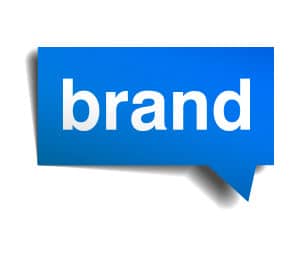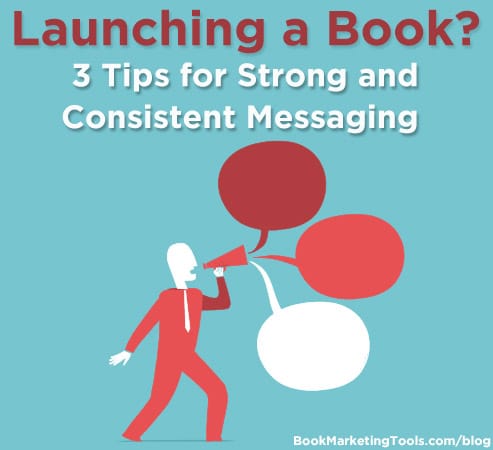Want to know what bestsellers have in common?
Killer copy.
Think about it: no one has ever read a book’s product page and thought, “Meh, this doesn’t sound great but I’ll buy it anyway.”
Nope, the writers behind the product pages have spent painstaking hours crafting copy that resonates with specific readers and triggers them to take action.
It’s not just product pages, though. It’s an array of messages across multiple platforms that culminate in fantastic sales. This includes the pieces of copy that make up your author bio, tagline, pitch, logline, book and review blurbs, launch emails, social media posts, book ads, website copy, and more.
Taking the information you’ve gathered about your own primary and secondary target audiences, it’s time to turn what motivates readers into compelling messages for your launch and beyond.
Before you begin, take time to study the copy written for books in your genre with the same or similar audiences. You can learn a lot from the book retailer product pages, dedicated sales pages, launch ads, and launch content of others to help you craft emotionally driven copy that grabs attention, hits your readership’s hot buttons, and persuades them to whip out their cash or credit card because they can’t live another day without your legal thriller or workout guide.
It’s crucial to note that formulating strong messaging that evokes action isn’t easy. You don’t want your pitch to sound like the next guy’s, leaving the reader with the impression that they’ve read it all before—which is why we have three quick tips for you.
Tip #1: Identify Your Unique Selling Proposition (USP)
A USP is the single aspect of your book that differentiates it from the rest in its market. It’s a creatively compelling storyline. It’s a different perspective. It’s mind-blowing research data gathered from your own experiments. It’s new information buyers won’t find anywhere else. Your USP doesn’t only communicate why your book is different. It also communicates why it’s better.
Ask yourself this: when potential buyers look at several titles in the same genre or on the same topic, why should they purchase yours? If your answer is “because I’ve created great content,” you may be in trouble. If your answer is “because this is what I’ve done differently,” you’re on the right track.
Think of your USP as if it’s a condensed elevator pitch—a short and persuasive summary of your book that could be delivered in the space of a 30-45 second elevator ride. It should be concise, make an impact, evoke emotion, and promise a desired result. When readers can look at your offering and say, “this is precisely what I was looking for,” you know you’ve hit the nail on the head.
Consider an author like Jodi Picoult for a second. She has a knack for traversing ethically and morally fraught terrain, asking tough questions that often have humanity divided. Her ability to write about controversial topics with emotionally-charged storylines has put her on bestseller lists time and time again. That’s her USP as an author—something that’s deeply woven into the language used for her book blurbs, product pages, and website.
Now, knowing what you know about your readers, put yourself in their shoes. What is it about your book that will appeal to them most? Write down a list of potential selling points and then pick the most compelling one, ensuring it’s evident in the copy you write.
Tip #2: Learn the Art of Copywriting
As a fiction writer, you devise enthralling plotlines, explore characters, describe scenes, and concoct creative twists. As a non-fiction writer, you share your experience, expertise, original ideas, and research. That doesn’t mean you know how to write persuasive copy that actually sells your book.
If you’re planning to just wing it, you’ll quickly discover that conversions don’t come easy. For this reason alone, you should start delving into the art of copywriting so that you know how to craft killer copy designed to hook readers and drive them to click the buy button come launch day.
How do you do that?
- By reading blog posts on copywriting.
- By taking online copywriting courses through sites like Udemy.
- By collecting swipe files for inspiration from some of the world’s best copywriters.
- By poring over pieces of copy related to bestselling books and reviewing the language that jumps out at you to pinpoint why it has captured your attention.
- By practicing your copywriting skills like crazy and then asking for feedback from people you not only trust to be honest, but who also represent your target readers.
- By measuring the results of everything you do to determine what’s working what needs improvement.
Being able to turn book descriptions into benefits, weave emotional and psychological triggers into your copy, and master proven copywriting techniques and formulas requires time to learn, so start now if you’re game for picking up a new skill. An alternative would be to hire a copywriter whose specialty lies in writing copy for campaigns like book launches.
Tip #3: Keep Your Author Brand in Mind
 Don’t lose sight of how you want to be perceived by your audience. Your messaging should communicate your authentic voice and uniqueness as an author while resonating with readers, establishing your authority, building your influence, and demonstrating to buyers what level of quality and value they can expect. By being purposeful, you have an opportunity to control the message and clearly articulate who you are and what you can bring to the table. Whether that’s a fun, playful, and cheeky voice or serious, empowering, and progressive voice is up to you. Just make sure you’re consistent across all platforms and that the language you use aligns with your brand.
Don’t lose sight of how you want to be perceived by your audience. Your messaging should communicate your authentic voice and uniqueness as an author while resonating with readers, establishing your authority, building your influence, and demonstrating to buyers what level of quality and value they can expect. By being purposeful, you have an opportunity to control the message and clearly articulate who you are and what you can bring to the table. Whether that’s a fun, playful, and cheeky voice or serious, empowering, and progressive voice is up to you. Just make sure you’re consistent across all platforms and that the language you use aligns with your brand.
Tailoring Your Messages
Don’t forget to adapt your messaging for each target readership. While your book might hold a certain appeal for one market, it might hold a completely different appeal for another—and we all know that using the right message for the right audience is key to bringing in those sales.
To ensure you do just that, follow these steps:
Step 2: Identify your audience. Primary and secondary markets could be buyers of your book for very different reasons. Knowing who you’re writing for will ensure you address the right people and that your message is effective. Be sure to focus on one audience at a time to limit confusion.
Step 3: Identify your message’s goal. Even when you’re not including a call to action and simply seeking to engage, you’re crafting a message for a reason. Understanding what the purpose of the communication is will help you adapt your wording accordingly.
Step 4: Consider the channel of communication. Will the message be more effective if delivered through your social media platforms, email, blog, podcast, video, or website? Furthermore, how are those audiences different? There’s a chance you’ll need to tailor your message for each channel and each audience, so be sure to answer these questions first.
Step 5: Be intentional with the words you use. If you want to connect with your readers, you need to use the language they use. Throwing in jargon or writing on a literacy level way beyond their comprehension is a sure way to lose them.
The truth is that not every bestseller is worthy of the status. Yet, these books make it onto the list every week. A number of factors could be at play, but—more often than not—persuasive messaging that convinces readers to buy is the driving force. Ultimately, it’s about crafting strong and consistent messaging geared towards conversions. Learn to do that and your book will be gold.
What makes you choose one book over another? What is it about the blurb, product page copy, and other related content that affects your buying decision? We’d love to hear your thoughts and opinions, so drop us a line in the comment box below. If you want to learn more about book launches, subscribe to our blog for more in this series and then grab a free copy of our book launch checklist below.


